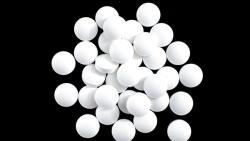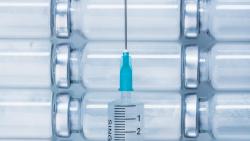
OR WAIT null SECS
Determining Biosimilarity
Analytical methods and functional assays are used to compare molecules and relate characteristics to quality attributes.
Biosimilar development requires comparison with an originator’s molecule to establish biosimilarity. “If found to be ‘similar’ during extensive physical, chemical, and biological characterization, subsequent nonclinical and clinical studies to demonstrate the same safety and efficacy profiles as the originator may be reduced,” note Fiona Greer, global director at SGS Life Science Services, and Rabia Hidi, director for the Biomarkers and Biopharmaceutical Testing Unit at SGS in France. Characterization is also an aid to design the manufacturing process to deliver the target product and to determine the potential for determining biosimilarity interchangeability according to regulatory guidelines. Although FDA’s formal guidance for determining interchangeability has not yet been released, various analytical approaches may be part of this determination. Pharmaceutical Technology spoke with Greer and Hidi about some of the analytical approaches used to determine biosimilarity.
Common approachesPharmTech: What are the common approaches to determine biosimilarity?
SGS: Common strategies at this stage all include assessment of primary and higher-order protein structure to examine defined quality attributes. Many batches of originator and biosimilar are studied for variation, particularly throughout the timeline of the manufacture of the originator.
In practice, analytical characterization will follow the requirements of the ICH Q6B guidelines (1), including determination of primary amino acid sequence; post-translational modifications, such as disulfide bridges and glycosylation; and spectroscopic profiles. Various chromatographic, spectroscopic, and electrophoretic methods can be used to interrogate and compare molecules on the basis of size, charge, and shape. Co- and post-translational modifications, fragmentation, aggregation, deamidation, and oxidation should all be studied and compared both qualitatively and quantitatively. It is important to assess the three-dimensional structure of the molecule, as changes here can greatly impact biological activity-both in terms of efficacy and potential immunogenicity. Once a robust analytical package of physicochemical tests has been performed, these are complemented by appropriate functional assays. The aim is to build a bridge between the observed analytical structural characteristics and their impact on clinical safety.
ChallengesPharmTech: What are some of the challenges with determining biosimilarity and how can these concerns be handled?
SGS: One of the challenges is in relating any observed small differences in structure during the comparability exercise to biological activity and clinical safety and effectiveness. For example, slight changes in the glycosylation pattern of certain therapeutic proteins can have a significant impact on the stability, clearance, binding, immunogenicity, and effector function. It is important, therefore, that appropriate in-vitro functional assays are performed. The type of functional tests should be based on the mechanism of action of the drug being studied. Ideally, bioassays should allow an assessment of all functional domains of a biosimilar candidate during comparison to the originator. Monoclonal antibodies are examples where multi-functionality should be assessed. Conventional assays for testing the functions of fragment antigen-binding (Fab) and fragment crystallizable (Fc) domains of therapeutic antibodies are widely available. These assays include in-vitro target binding, either on intact cells or using a soluble target; antibody-dependent cell-mediated cytotoxicity (ADCC); complement-dependent cytotoxicity (CDC); programmed cell death (PCD); and surface plasmon resonance (SPR) Fc-receptor binding assays.
Potency assaysPharmTech: >What tests do you use to determine biosimilarity?
SGS: Biological activity for comparability testing is performed using a suitable quantitative potency assay, which has been fit-for-purpose validated using the best experiment design. These assays should be developed to offer high precision and sensitivity for in-vitro detection of functional differences between the biosimilar and the reference compound. The design of the experiment is crucial during the development and the validation of these assays and should take into account the intended application of the method, such as the number of samples to be tested in one run and the number of replicates.
We have previously presented data of two experiments performed within our laboratories that examined functional activity of a biosimilar to its reference product (2, 3). In both these instances, a reference medicinal product is compared with a biosimilar for insulin. In the first set of data, we assay for in-vitro potency testing of insulin reference medicinal products and biosimilar compounds for inducing cell proliferation. Insulin and analogs are mediated predominantly via stimulation of the insulin receptor, but also through the insulin-like growth factor-1 receptor (IGF-1R). The stimulation of the IGF-1R and the effect on in-vitro mitogenic activity represents an indicator during in-vitro comparability testing. The second set of data demonstrates a receptor-binding assay undertaken to establish comparability in reactivity.
Prior to analysis of comparability data, outlier values from the biosimilar test sample and the reference medicinal product are detected, using a statistical model chosen during the development and confirmed during the validation of the method. A four-parameter logistic (4PL), nonlinear regression model is commonly used for curve-fitting analysis in bioassays, immunoassays such as enzyme-linked immunosorbent assays, or dose-response curves. Then, the system suitability is assessed to check whether the preparation of the samples behaved in a manner consistent with the expected performance of the assay. This includes adequacy of the 4PL fit to be used to assess similarity (reflected by R2 values). Other system suitability criteria are the background and maximum responses, top/bottom of the curves (= specific response), slope of the curves, the EC50 or IC50 values (corresponding to the concentrations of the drug showing 50% of the maximum stimulation or inhibition response, respectively) and the variability between replicates of signal data.
To be used for biosimilarity comparison, the dilution curve from the biosimilar test sample must demonstrate parallelism when fitted against the dilution curve of the RMP. In other words, the two have sufficiently similar concentration–response curves or similar straight-line subsets of concentrations. Parallelism of the two superimposed curves will be obvious by visual inspection of the plots and also confirmed by running an appropriate statistical test which should demonstrate that the linear parts of the curves are parallel.
Once parallelism of the data is demonstrated, then the relative potency is determined using EC50 (or IC50) values determined from biosimilar and RMP dilution curves. Depending on the variability and the robustness of the method, it is recommended that potency results be reported from a number of repeats to ensure that the most accurate combined single potency value is conveyed.
References
1. ICH, Q6B, Specifications: Test Procedures and Acceptance Criteria for Biotechnological/Biological Products, CPMP/ICH/365/96 (September 1999).
2. S. Roussi, et al., “Development and validation of a mitogenesis potency assay to be used for in-vitro potency testing of insulin biosimilar compounds,” Poster at the AAPS National Biotechnology Conference (San Diego, 2014).
3. E. Stephan, et al., “Development and validation of a receptor binding competitive radioactive assay to be used for potency testing of human insulin binding to insulin receptor,” Poster at the AAPS National Biotechnology Conference (San Diego, 2014).
Article DetailsPharmaceutical Technology
Vol. 39, No. 12
Pages: 46–47
Citation:
When referring to this article, please cite it as J. Markarian, "Determining Biosimilarity," Pharmaceutical Technology39 (12) 2015.


